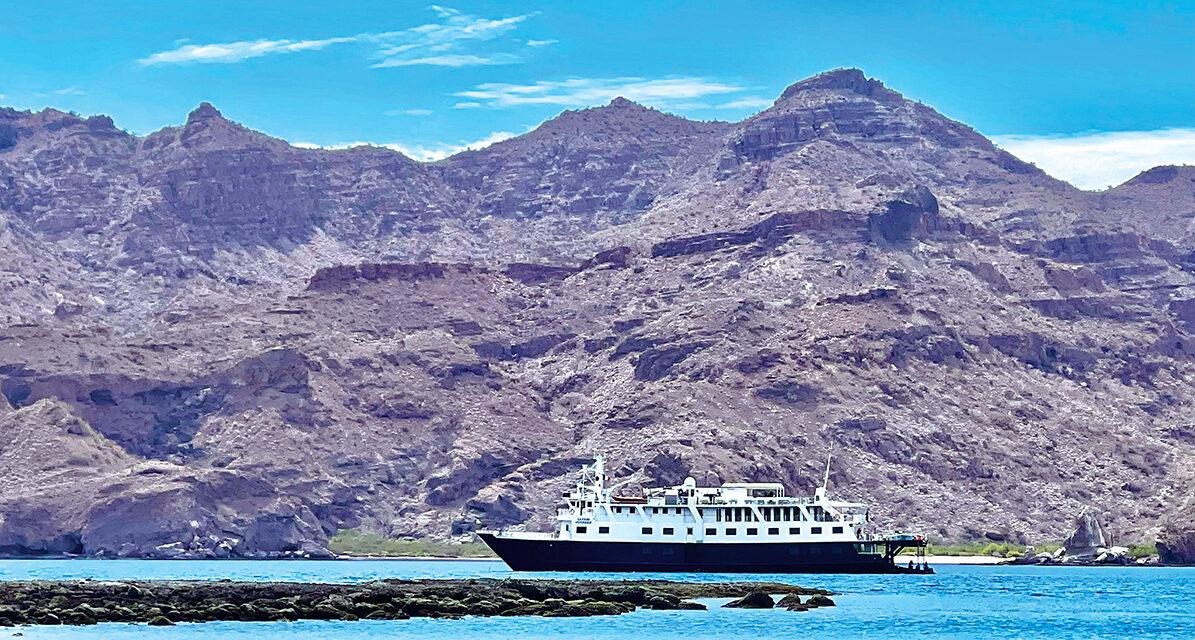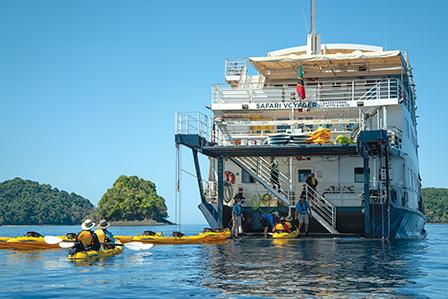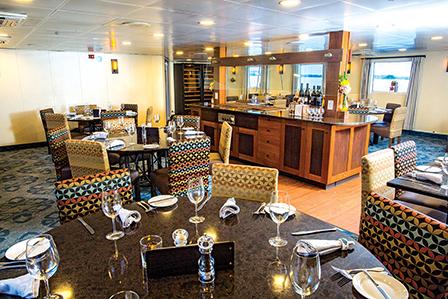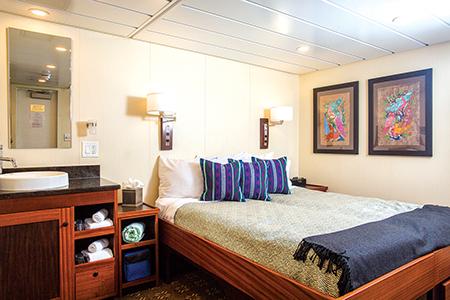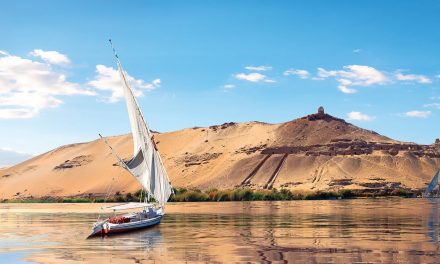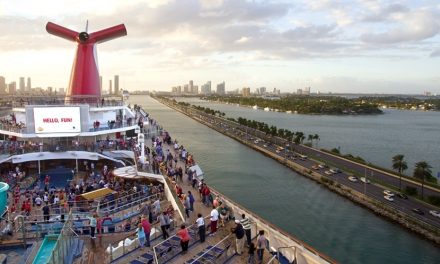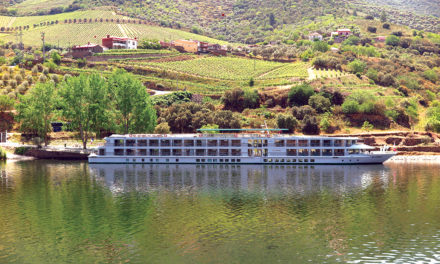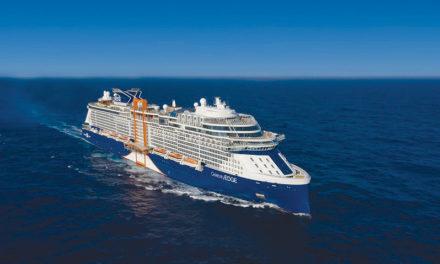Cruise
An UnCruise in the Sea of Cortez
Seven nights in the UNESCO-acclaimed ‘world’s aquarium’
Article and photography by Nicholas Kontis
In 1940, famed author John Steinbeck sailed from Monterey, California, on a sardine boat with his marine biologist friend Ed Ricketts, an adventure retold in his book, The Log from the Sea of Cortez. After circumnavigating Mexico’s Baja California peninsula, the two men spent six weeks in the Sea of Cortez (the Gulf of California), collecting marine specimens and documenting — for the first time — the incredible biodiversity in this massive swath of sea.
Today, it’s recognized by UNESCO as a World Heritage Site with the richest marine ecosystem in the world. More than 1,000 species of fish another 1,900 species of other marine life call the Sea of Cortez home. Renowned explorer and conservationist Jacques Cousteau dubbed the pristine sea “the world’s aquarium.”
When my wife and I were presented with an opportunity to retrace the route of Steinbeck’s landmark voyage, we jumped at the chance. We joined UnCruise Adventures on a week-long sailing expedition through this remarkable gulf.
The Safari Voyager
The Safari Voyager departs from the relaxed port city of La Paz, a drive of fewer than three hours from the sun-splashed resort town of San José del Cabo. The ship is docked here in winter, during the prime three-month whale-watching season.
Most UnCruise guests arrive at Los Cabos International Airport and enjoy a day at the Grand Faros Los Cabos Hotel before boarding an air-conditioned bus to La Paz. As my wife and I live part of the year in Puerto Vallarta, we took a nonstop flight on regional airline TAR to the gateway city, where we joined the crew and fellow passengers for welcome cocktails on the Voyager.
Expedition sailing is most suitable for exploring the Sea of Cortez, and the Safari Voyager delivered on all counts. Aside from the plethora of marine life, there is far more endemic flora and fauna beyond the red-rock cliffs and secluded beaches of isolated desert islands, sometimes referred to as “the Galapagos of the North.” In stopovers at Bahia de Loreto National Park, in the Bahía Agua Verde (“green water”), and on the islands of San José, San Francisco, Partida, Carmen and Los Islotes, we enjoyed such eco-friendly activities as snorkeling, kayaking, paddle boarding, hiking and horseback riding.
Amazing adventure
One highlight was Isla Espiritu Santo, the crown jewel of the Sea of Cortez. Here, I jumped into the lukewarm sea to find myself face-to-face with a pride of playful sea lion pups. As they corkscrewed around me, they first stared, then darted off like children in a playground, seeking new friends and perhaps a fresh fish lunch.
Erika Hernández, a Costa Rican native who served as lead expedition guide, had prepared us in advance for this amazing adventure. “Sea lions are excellent divers and stay underwater for an average of three minutes at a time,” she told us. “They can hold their breath for up to 20 minutes, can dive up to 1,000 feet, and can swim up to 22 miles per hour.”
Some of the other high points of our seven-day expedition were these:
• Unrivaled snorkeling in the crystal-clear waters of the “world’s aquarium,” discovering countless tropical fish and an abundance of vibrant coral.
• Scanning the horizon for whales and sloth-like whale sharks; watching graceful mobula rays and dancing dolphins.
• Bird watching: Magnificent frigate birds, pelicans, great blue herons, rare blue- and red-footed boobies, cormorants and hummingbirds were, it seemed, everywhere we looked.
• Kayaking along the red-rock cliffs of Isla San Francisco and exploring rugged shores by skiff.
• Hiking along ridges through desert bus and cacti, and ascending rocky trails for sweeping bay views.
• Riding mules from Bahía Agua Verde into the arroyos of Loreto to visit local rancheros.
Life on Board
Built in 1984 and refurbished in 2016, the Safari Voyager is perfect for leisurely exploring. It accommodates up to 66 passengers and offers 34 cozy cabins in seven categories — single, master, commander, captain, admiral, commodore suite and owner’s suite. Each air-conditioned room has windows facing the sea, a television, a desk, bathrobes and toiletries.
The ship’s lowest deck contains its restaurant and concealed kitchen. On our April trip, passengers dined at tables of six, mingling over breakfast, lunch and dinner. I wouldn’t have wanted to miss the buffet-style feast served on the sundeck: It featured tomato basil soup, rack of lamb, crab cakes with red-pepper remoulade, chili relleno with salsa verde, plenty of vegetables and a peanut-butter chocolate trifold for dessert.
A daily happy hour included small appetizers. Chef Matt’s barbecue pork crostinis and deviled eggs with shrimp were unforgettable. Bartenders Katy and Tim created signature libations as we chatted about past and future activities.
We spent our last day relaxing on the golden sands of Isla Espiritu Santo. When we returned to La Paz for a farewell dinner, we were treated to a slide show recalling the week’s events and our new friendships made aboard the Safari Voyager.
A few details
On our expedition, we were a bit disappointed not to have up-close encounters with gentle giant whales and whale sharks. The odds are favorable, however, as the hot desert sun, warm Mexican seas and shallow lagoons encourage winter mating. Early-season visits offer the best chance for snorkeling alongside whale sharks and spotting large whales.
Whales arrive from Alaska’s frigid waters to give birth as early as November. Uncruise Adventures has scheduled its 2023 Baja Bounty voyages to begin January 21, with the season’s last sailing on March 18.
UnCruise is well known for its innovative marine adventures. A fleet of adventure ships explore from Alaska to Hawaii, from the Pacific Northwest to Costa Rica, Panama and Ecuador’s Galapagos Islands. Beginning in 2023, a new Caribbean journey will follow the Belize Barrier Reef down the Central American coast to Guatemala.

